Differentiating Among Gifted Learners: A Comparison of Classical Test Theory and Item Response Theory on Above-Level Testing
Brandon LeBeau, Susan G. Assouline, Duhita Mahatmya, Ann Lupkowski-Shoplik
Belin-Blank Center, University of Iowa
Above Level Testing
- Participate in a Talent Search (for example, a university-based talent search)
- Above-level testing in school using available instruments or through a university program. For example, www.i-excel.org
Above-level testing helps us discover talented students and tailor educational options for them
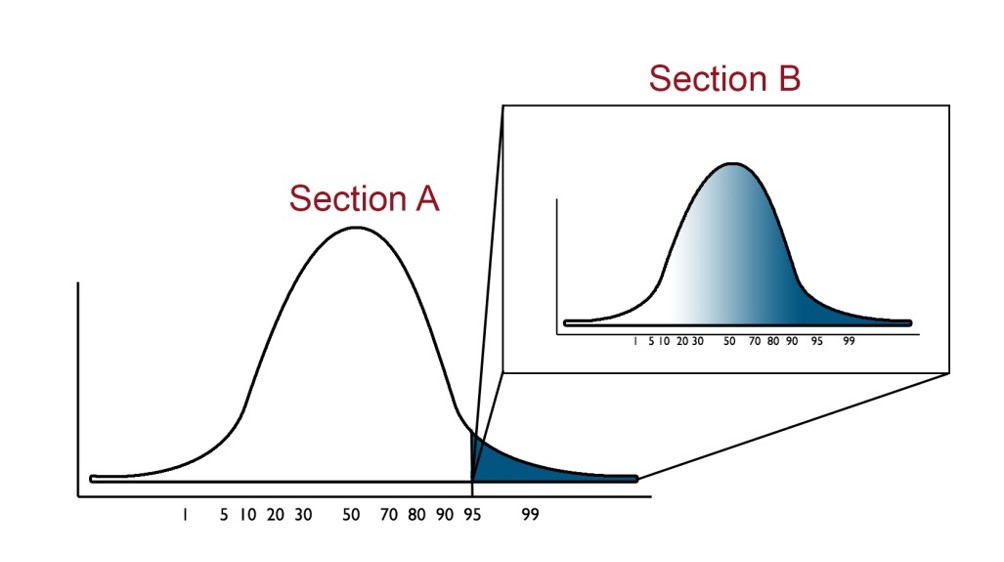
BESTS In School Testing
- Belin-Blank Exceptional Student Talent Search (BESTS)
- 4th – 6th graders: Take I-Excel in school, not on the traditional open Saturday testing offered throughout the U.S.
- The goal: More students have access to above-level testing
- Available to any talented student in the school
- Not just for those whose parents show initiative to register for testing
A new, online test, I-Excel…
- …is an online test for very capable 4th – 6th graders
- uses an online platform developed by the Belin-Blank Center for use as an above-level assessment
- …licenses content developed by ACT
- that was designed to measure academic progress of junior high students.
- From that content, Belin-Blank has been identifying the academic talents of bright 4th- 6th grade students for over 20 years.
- …provides the power of above-level testing
I-Excel
- Science (28 items)
- Math (30 items)
- Reading (30 items)
- English (40 items)
- Contains 8th grade level items
- Used as an above-level test for 4th-6th graders
Challenges for use
- Reliability and validity are for an 8th grade normative sample
- Is not a high-achieving sample
- Would like the score to represent aptitude
- Same score range for all students
- Ignores grade student currently is in
- Ignores how far away student is from 8th grade content exposure
Research Questions
- To what extent does the information obtained through CTT compare with information obtained from IRT in the above-level testing environment?
- How does the item level analysis with IRT impact aptitude estimates?
- To what extent do CTT and IRT methods provide similar classifications of high-aptitude for students initially identified as high-achieving?
Who this research benefits
- Researchers
- Practioners, teachers, parents could use the IRT aptitude scores
Sample
- 1,893 students took I-Excel between March 2016 through July 2017
- A single form of I-Excel
- Grades:
- 4th: 13.7%
- 5th: 28.1%
- 6th: 58.2%
- Sex:
- Female: 49%
- Male: 51%
- Students took all four subareas (English, Math, Reading, and Science)
Classical Test Theory (CTT)
- Number of questions answers correctly
- Percentile Ranks
- Item-level statistics
- Proportion correct
- Biserial correlations
- Statistics are sample dependent
- Scores based on 8th grade normative sample
Item Response Theory (IRT)
- Mathematical model
- Similar to logistic regression, but with a latent variable (i.e. aptitude)
- Individual response strings are used to estimate...
- item parameters (i.e. discrimination, difficulty)
- person parameters (i.e. aptitude)
- Accounted for grade through multigroup IRT framework
IRT Uses Student Response Strings
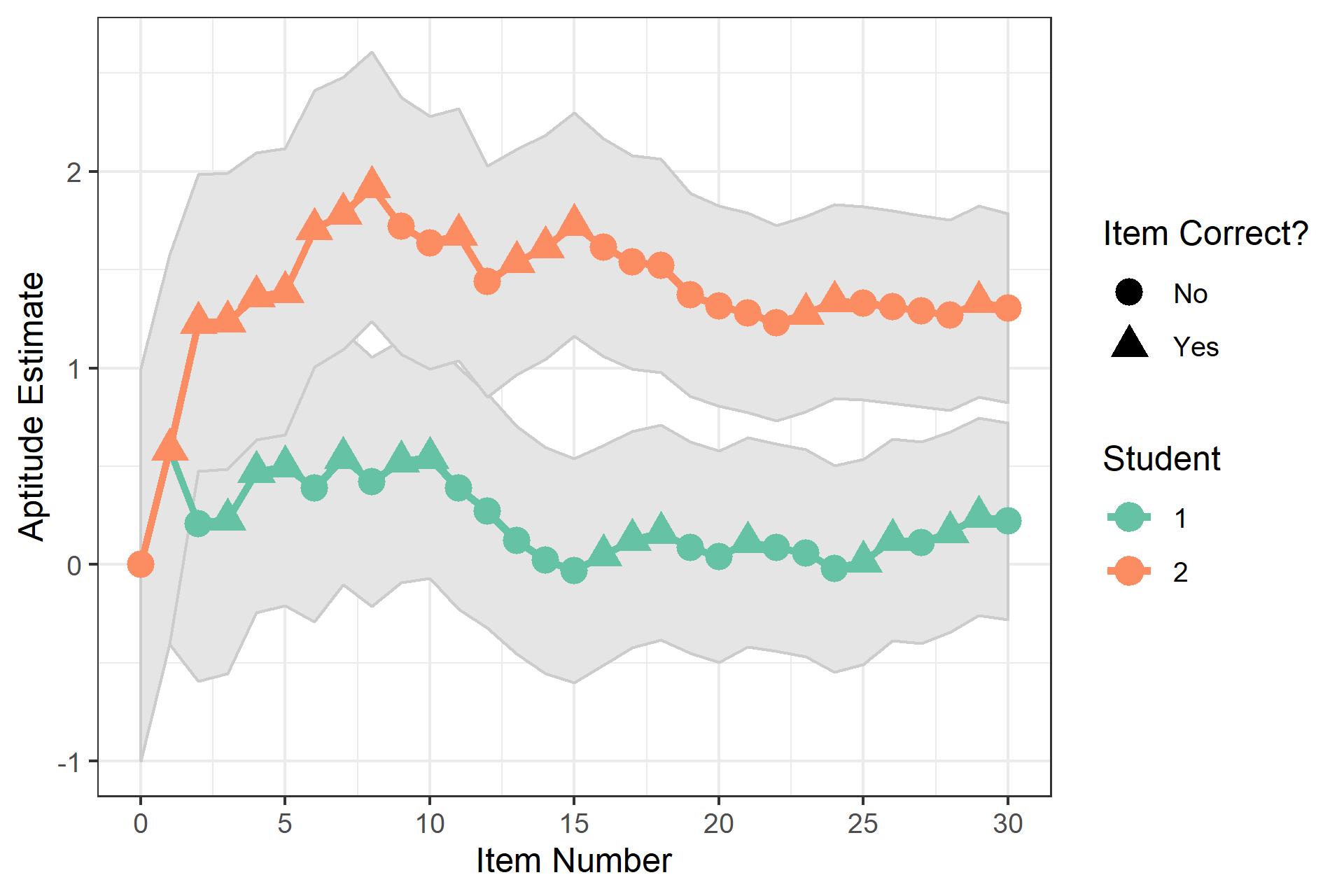
Additional IRT Benefits
- Create developmental scale
- Can measure growth
- Could move to computer adaptive testing
- Can use IRT linking methods
CTT Violin Plots
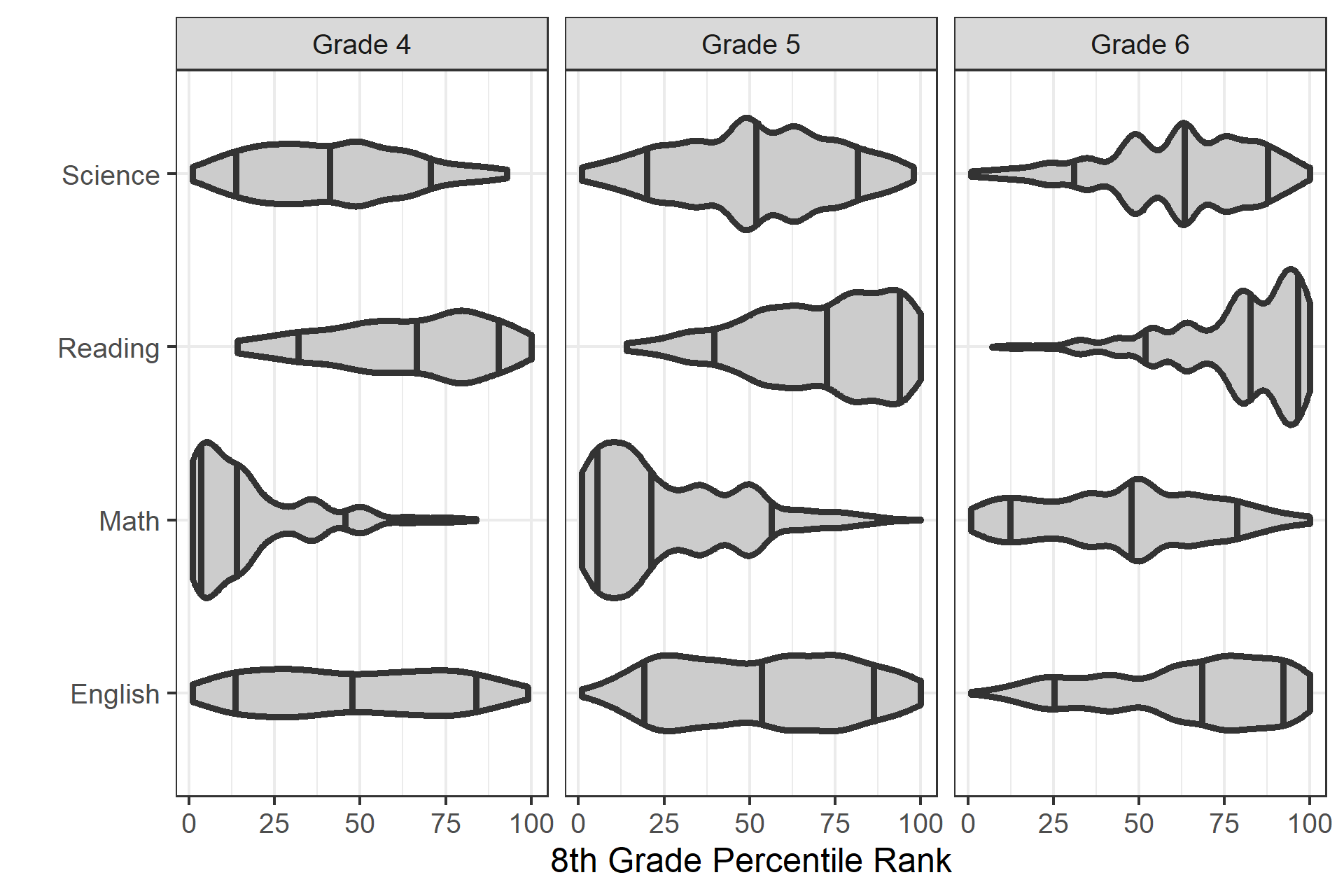
Differentiating students
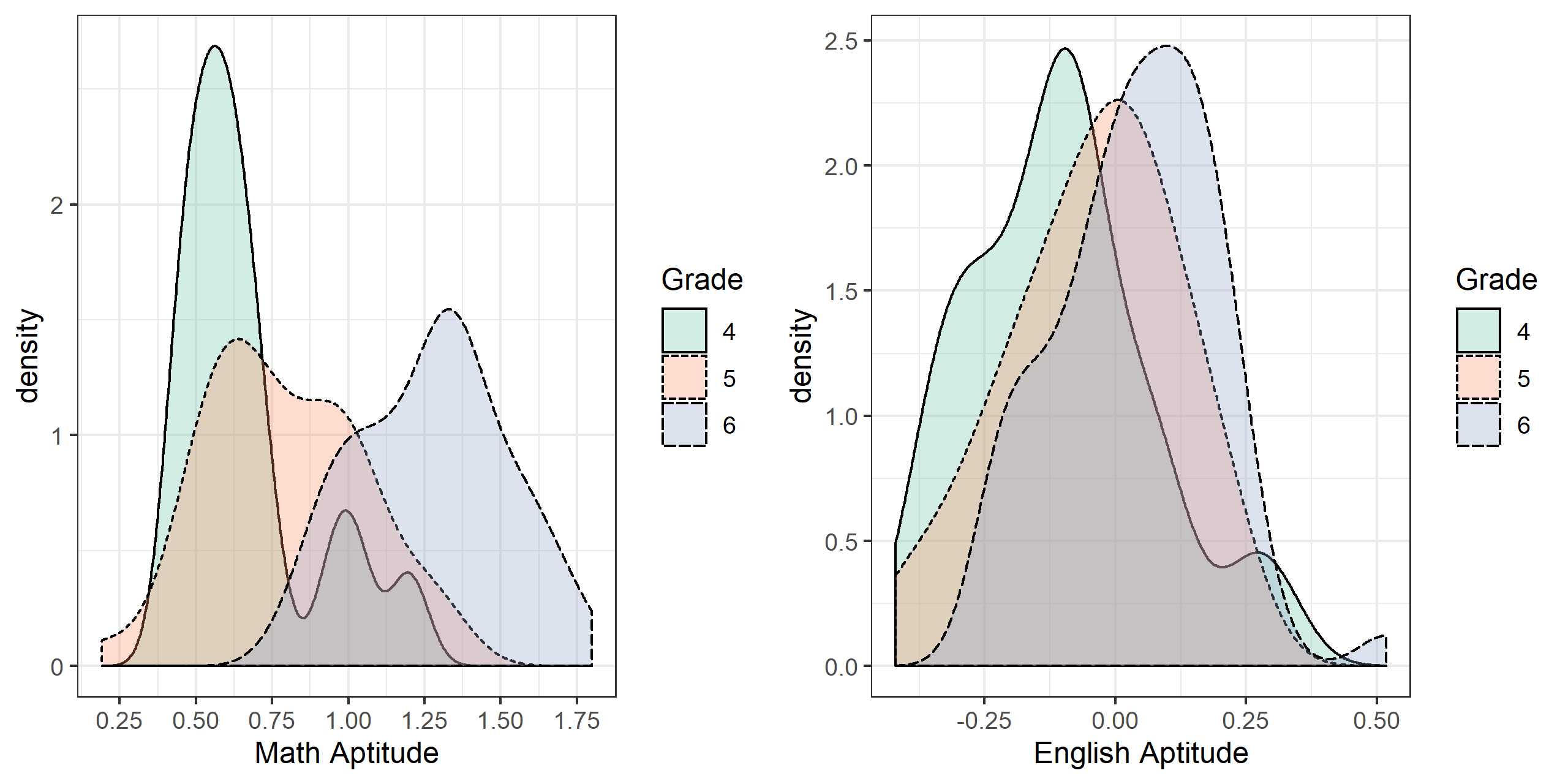
Average Aptitude Estimates

Identify students ready for additional challenge

Enhancing the 4Ds of talent development through IRT scale
- Improve reliability and validity of estimates of high-achieving students' aptitude
- Broaden identification of high-achieving students ready for advanced curriculum
- Better align assessments to interventions (e.g., enrichment, acceleration)
- Refine evaluation of high-achieving students' growth in domains
Proportion Correct
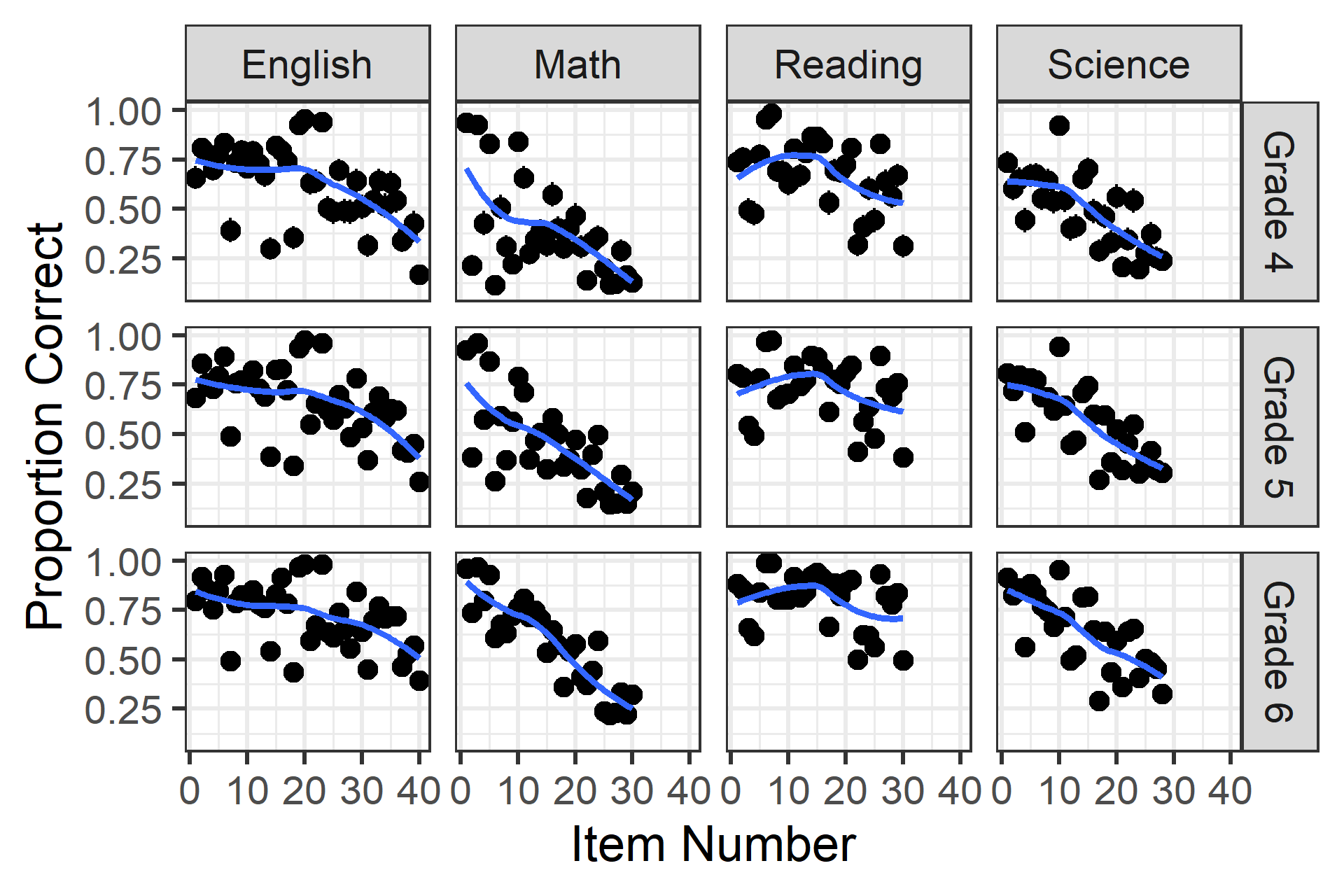
Explore Aptitude for Identification
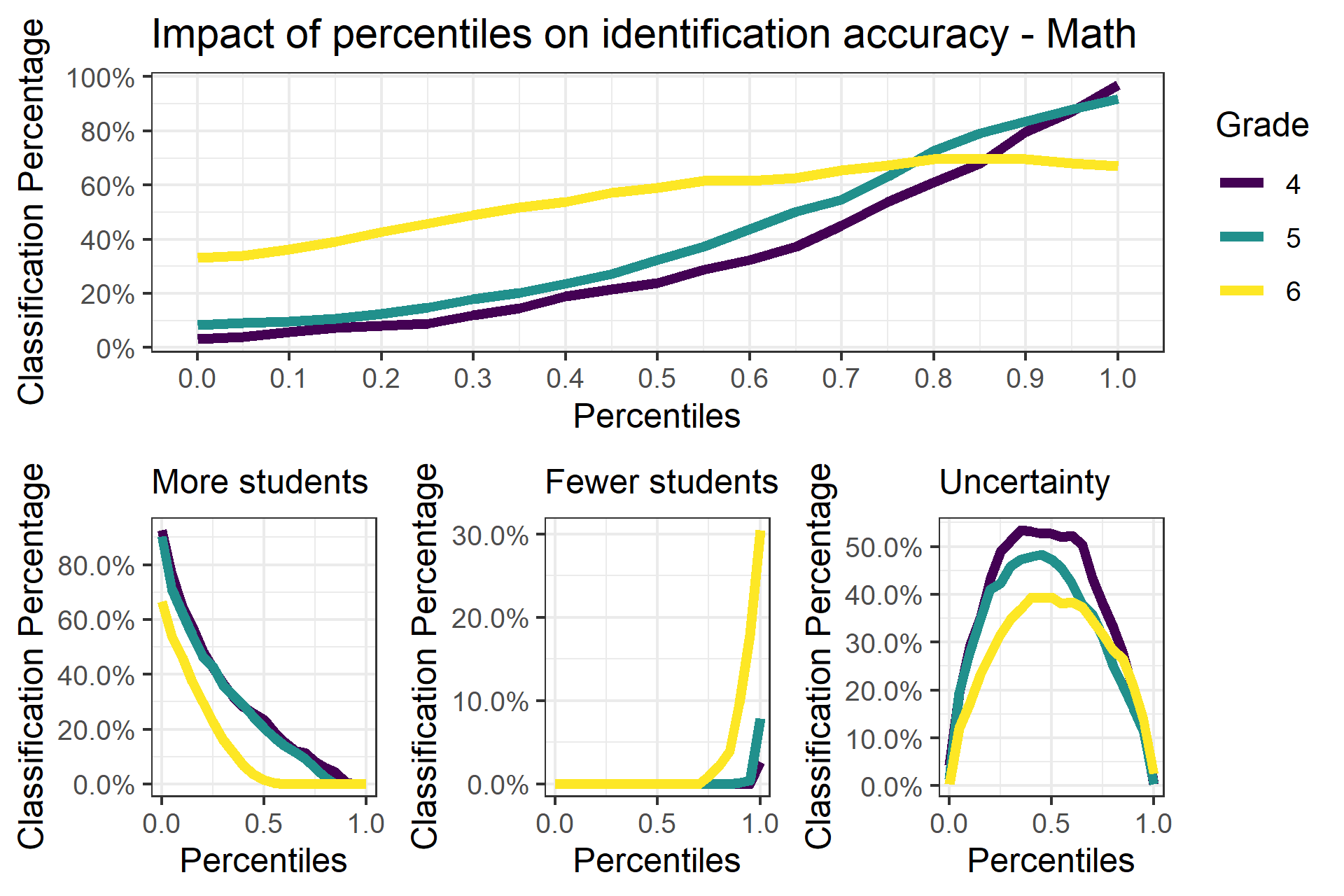
Thank You
- Questions?
- https://brandonlebeau.org/slides/nagc2019/
Differentiating Among Gifted Learners: A Comparison of Classical Test Theory and Item Response Theory on Above-Level Testing
Brandon LeBeau, Susan G. Assouline, Duhita Mahatmya, Ann Lupkowski-Shoplik
Belin-Blank Center, University of Iowa